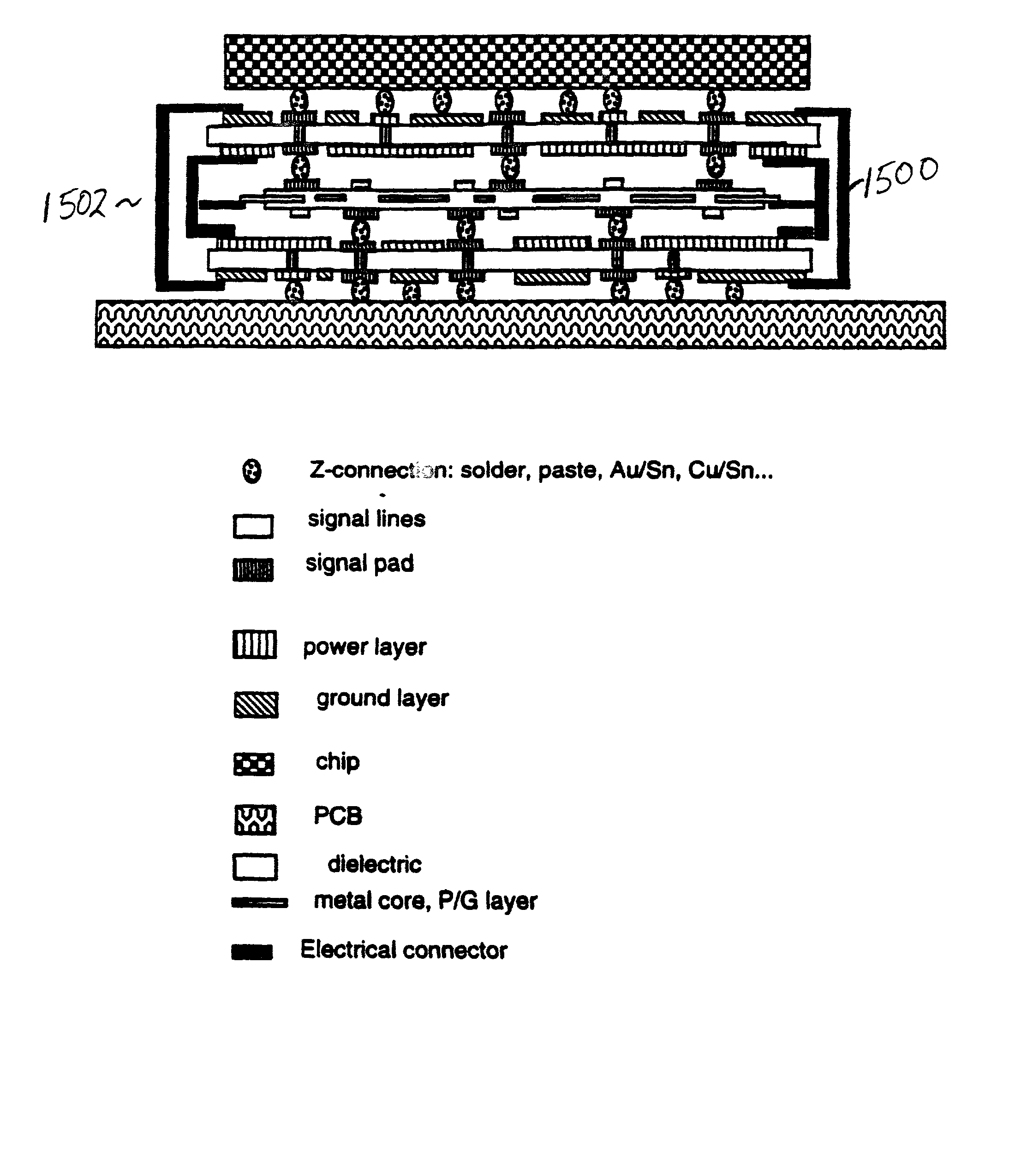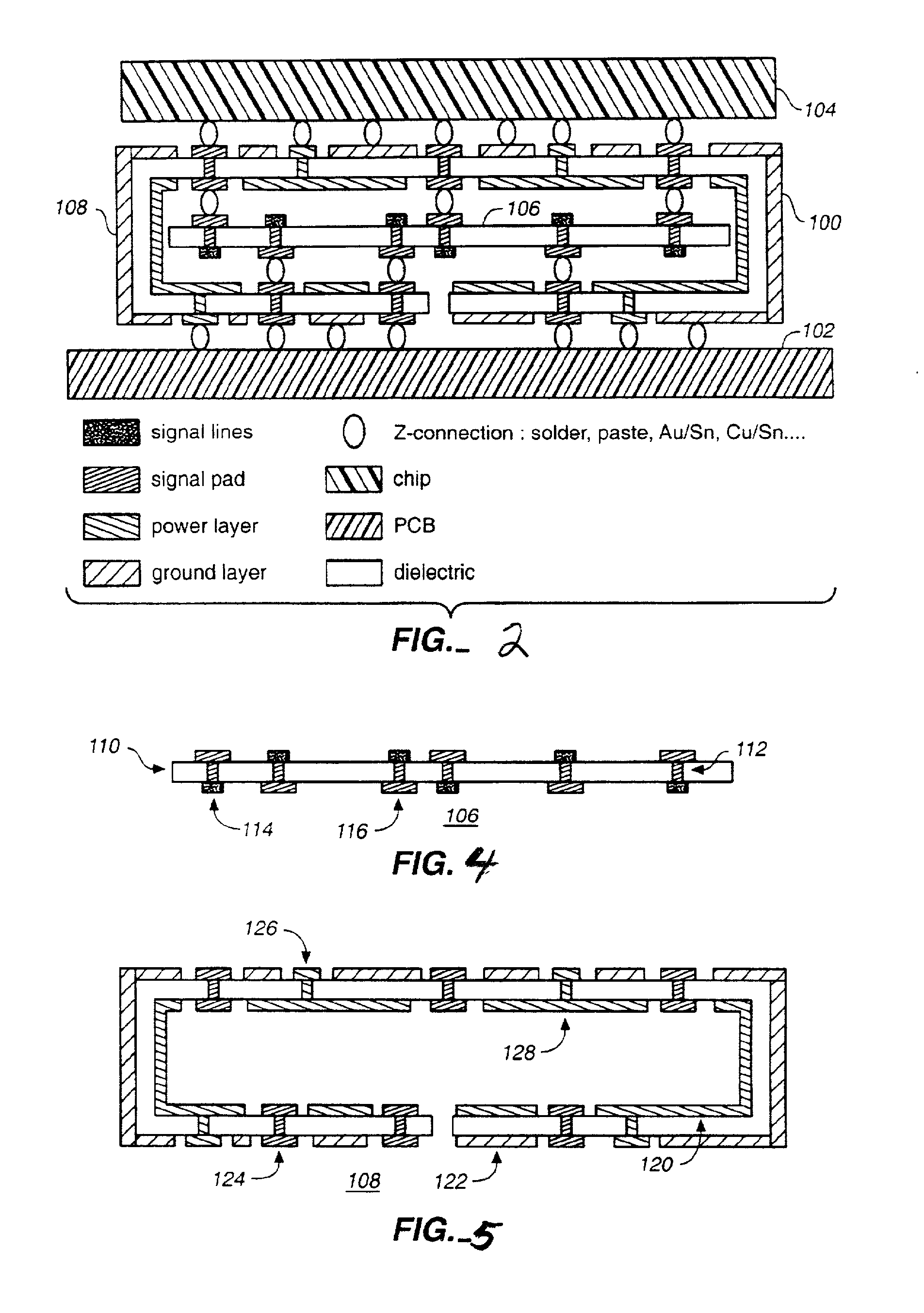Composite interposer and method for producing a composite interposer
a composite interposer and interposer technology, applied in the direction of printed circuit manufacturing, cross-talk/noise/interference reduction, printed circuit aspects, etc., can solve the problems of capacitive coupling between the lines and the substrate, noise in the signals, and close proximity of signal lines
- Summary
- Abstract
- Description
- Claims
- Application Information
AI Technical Summary
Problems solved by technology
Method used
Image
Examples
Embodiment Construction
[0047] The present invention is directed to an interposer designed to provide signal, power, and ground connections between an integrated circuit chip and an underlying printed circuit board or substrate. The inventive interposer provides the following several advantages over conventional structures:
[0048] (1) The density of the interposer signal routing lines can be higher than for conventional interposers because there are no power and ground line connects which pass through the signal core. In this regard, the gap between vias which connect signal lines is increased by approximately a factor of the square root of 2 compared to the line density on a chip. This means that the signal line density on the interposer can be increased relative to that on a chip which includes power and ground lines:
[0049] (2) Different technology and processes can be used to fabricate the signal core and the power / ground wrap. Since the pattern size of the power / ground wrap is larger, a lower cost proce...
PUM
 Login to View More
Login to View More Abstract
Description
Claims
Application Information
 Login to View More
Login to View More - R&D
- Intellectual Property
- Life Sciences
- Materials
- Tech Scout
- Unparalleled Data Quality
- Higher Quality Content
- 60% Fewer Hallucinations
Browse by: Latest US Patents, China's latest patents, Technical Efficacy Thesaurus, Application Domain, Technology Topic, Popular Technical Reports.
© 2025 PatSnap. All rights reserved.Legal|Privacy policy|Modern Slavery Act Transparency Statement|Sitemap|About US| Contact US: help@patsnap.com



